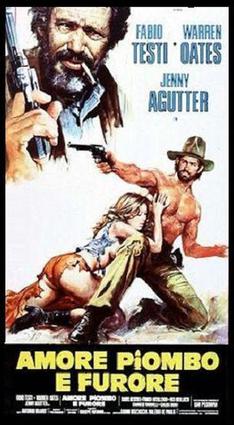| China 9, Liberty 37 (Amore piombo e furore) | |
|---|---|
 Italian film poster | |
| Directed by | Monte Hellman |
| Screenplay by | Jerry Harvey Douglas Venturelli Ennio De Concini Don Vicente Escrivá |
| Story by | Jerry Harvey Douglas Venturelli |
| Produced by | Gianni Bozzacchi Valerio De Paolis Monte Hellman |
| Starring | Fabio Testi Warren Oates Jenny Agutter Isabel Mestres Franco Interlenghi Paco Benlloch Gianrico Tondinelli Charly Bravo Sam Peckinpah |
| Cinematography | Giuseppe Rotunno |
| Edited by | Cesare D'Amico |
| Music by | Pino Donaggio |
Production companies | Compagnia Europea Cinematografica Aspa Producciones |
| Distributed by | Fida International Films |
Release date |
|
Running time | 92 minutes |
| Countries | Italy Spain |
| Language | Italian |
This article needs additional citations for verification .(February 2024) |
China 9, Liberty 37 (Italian : Amore piombo e furore, "Love, Lead, and Fury") is an Italian-Spanish 1978 Western film directed by Monte Hellman, [1] starring Warren Oates, Jenny Agutter, and Fabio Testi. Noted director Sam Peckinpah has a small, rare acting role. The film was shot in locations in Spain and Italy by cinematographer Giuseppe Rotunno. Pino Donaggio composed the musical score. The English title refers to a sign seen at the beginning of the movie on U.S. Route 90 in Beaumont, Texas. Monte Hellman, utilized the scenic location of the highway to enhance the authenticity of its setting. The film had a very sparse theatrical release in the United States, and did not play in some cities until as late as 1984.